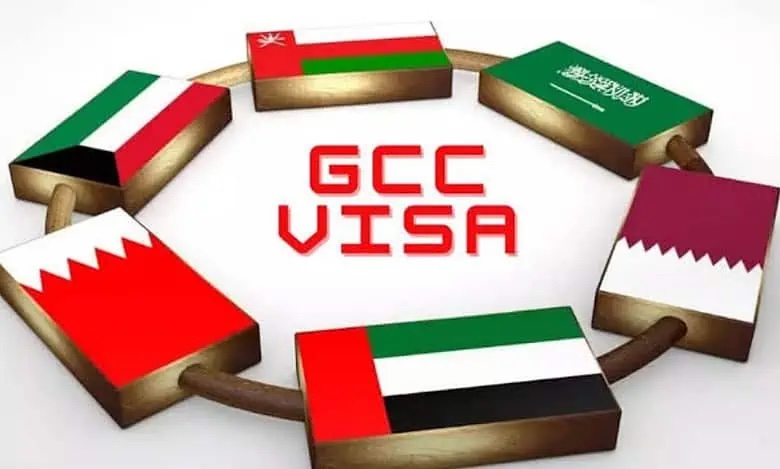Gulf Countries New Unified Tourist Visa
The Gulf Cooperation Council (GCC) has recently made a significant announcement that is set to revolutionize tourism within the region. The secretary-general of the GCC has approved a unified tourist visa that will be applicable to all member states, including Bahrain, Kuwait, Oman, Qatar, Saudi Arabia, and the United Arab Emirates (UAE) 1. This new visa system aims to enhance communication and coordination between these countries, streamlining the movement of residents and tourists and having a positive impact on their economies and tourism sectors 1. In this comprehensive guide, we will delve into the details of this groundbreaking initiative, explore its potential benefits, and shed light on how it will shape the tourism landscape of the Gulf region.

1. Background of the Unified Gulf Tourist Visa
The concept of a unified Gulf tourist visa has been in the pipeline for some time, and its approval marks a significant milestone for the GCC. The announcement was made during the 40th meeting of the GCC interior ministers, which was chaired by Sayyed Hamoud bin Faisal Al Busaidi, the interior minister of Oman and the current session’s president 1. The visa is expected to be introduced between 2024 and 2025, offering a seamless travel experience for tourists and residents alike 1.
GCC Secretary-General Jasem Mohamed Albudaiwi emphasized the importance of this visa in facilitating movement between member states and its positive impact on the economic and tourist sectors of the region. Drawing a parallel with the Schengen visa, which allows for travel within the European Union, the unified Gulf tourist visa aims to streamline travel processes and eliminate the barriers and complexities associated with the current visa restrictions among the GCC countries 1.
2. Objectives and Benefits of the Unified Gulf Tourist Visa
The unified Gulf tourist visa holds immense potential for the economies and tourism sectors of Bahrain, Kuwait, Oman, Qatar, Saudi Arabia, and the UAE. Let’s explore some of the key objectives and benefits of this groundbreaking initiative:
2.1 Facilitating Movement and Streamlining Processes
One of the primary objectives of the unified Gulf tourist visa is to simplify travel procedures and enhance the ease of movement between member states. Currently, tourists and residents face numerous hurdles, such as having to apply for separate visas for each country they wish to visit within the GCC. The new visa system will eliminate these complexities, allowing individuals to explore multiple destinations within the region with a single visa 1.
2.2 Boosting Tourism and Economic Growth
By providing a unified tourist visa, the GCC aims to attract a larger number of tourists to the region. Currently, some potential visitors are deterred by the visa restrictions imposed by certain member states. The unified visa will remove these barriers, encouraging more tourists to explore the rich cultural heritage, breathtaking landscapes, and modern attractions of the Gulf region 1.
The influx of tourists will have a significant positive impact on the economies of member states. Increased tourist spending will boost local businesses, create employment opportunities, and contribute to the growth of the hospitality and tourism sectors. Furthermore, the unified visa is aligned with the GCC 2030 tourism strategy, which seeks to increase the tourism sector’s contribution to the gross domestic product (GDP) of member states 1.
2.3 Strengthening Communication and Coordination
The unified Gulf tourist visa is not only a facilitator of travel but also a testament to the strong bond and collaboration among the GCC member states. By implementing this visa, the GCC aims to enhance continuous communication and coordination between its member states, fostering closer ties and promoting mutual understanding and cooperation 1.
3. Comparison with the Schengen Visa System
To better understand the implications of the unified Gulf tourist visa, it is helpful to draw a comparison with the Schengen visa system in the European Union. The Schengen visa allows individuals to travel freely within the 27 member states of the EU for tourism or business purposes 1. Similarly, the unified Gulf tourist visa will grant tourists and residents the flexibility to explore multiple countries within the GCC with a single visa 1.
While the visa systems have similarities, it’s important to note that they are tailored to the specific needs and requirements of their respective regions. The unified Gulf tourist visa will take into account the unique cultural and economic aspects of the GCC member states, ensuring a smooth and efficient travel experience for visitors 1.
4. Implications for the Middle East Tourism Sector
The Middle East has experienced a rapid recovery in the tourism sector following the challenges posed by the COVID-19 pandemic. In fact, the first quarter of this year saw the Middle East become the first region in the world to surpass pre-pandemic tourism arrival numbers, exceeding 2019 figures by 15% 1. This remarkable rebound highlights the resilience and attractiveness of the region for travelers.
While the unified Gulf tourist visa is expected to further boost tourism in the GCC member states, recent events in the Middle East, such as the outbreak of the Hamas-Israel war, have raised concerns about the region’s tourism trajectory. It is essential to monitor geopolitical developments and their potential impact on travel plans and safety considerations in the Middle East 1.
5. Saudi Arabia’s Commitment to Tourism Development
As the largest economy within the GCC, Saudi Arabia has been actively investing in the development of its tourism sector. The kingdom has allocated a staggering $1 trillion to transform its tourism industry, aiming to diversify its economy away from oil dependency 1. This ambitious undertaking reflects Saudi Arabia’s commitment to positioning itself as a leading tourist destination and highlights the significant role that tourism plays in shaping the country’s future.
The introduction of the unified Gulf tourist visa aligns perfectly with Saudi Arabia’s tourism development plans. By facilitating travel between member states, Saudi Arabia aims to attract a larger number of tourists to experience its rich cultural heritage, stunning landscapes, and vibrant cities. The unified visa will contribute to the success of Saudi Arabia’s tourism vision, enhancing its position as a must-visit destination in the Middle East 1.
6. Conclusion
The approval of the unified Gulf tourist visa represents a major milestone for the GCC member states. This groundbreaking initiative will streamline travel processes, boost tourism, and enhance economic growth within the region. By allowing residents and tourists to explore multiple countries with a single visa, the GCC aims to foster continuous communication and coordination among its member states while providing a seamless travel experience. Saudi Arabia’s commitment to tourism development, coupled with the introduction of the unified visa, sets the stage for an exciting future for the Gulf region’s tourism sector. As the Middle East continues to rebound from the impact of the pandemic, the unified Gulf tourist visa marks a positive step forward in positioning the region as a premier destination for travelers worldwide.

Mastering Your DIY Umrah: A Strategic Guide to Plan Your Journey
Umrah Tips to Consider Before Your Journey
